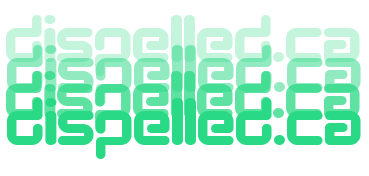Differences Between Unix and Linux Firewalling Approaches
Unix and Linux systems both offer robust firewalling capabilities, but their approaches differ significantly in terms of philosophy, tools, and implementation. This tutorial explores the key differences between Unix and Linux firewalling, focusing on OpenBSD’s `pf`, FreeBSD’s `ipfw`, and Linux’s `nftables`.
Philosophical Differences
The differences between Unix and Linux firewalling approaches stem from their underlying philosophies:
- Unix Philosophy: Unix systems, particularly OpenBSD and FreeBSD, emphasize simplicity, security, and correctness. Firewalls like `pf` and `ipfw` are tightly integrated into the operating system and designed to be minimalistic yet powerful.
- Linux Philosophy: Linux systems prioritize flexibility and modularity. Firewalling tools like `nftables` are part of the kernel but are designed to work in diverse environments, from embedded systems to enterprise-grade servers.
Key Firewalling Tools
Here’s a comparison of the primary firewalling tools used in Unix and Linux systems:
| Feature | OpenBSD `pf` | FreeBSD `ipfw` | Linux `nftables` |
|---|---|---|---|
| Integration | Built into OpenBSD; tightly integrated with the OS. | Built into FreeBSD; tightly integrated with the OS. | Part of the Linux kernel; works across all major distributions. |
| Configuration | Rules are written in `pf.conf` using a simple, human-readable syntax. | Rules are written in `ipfw` commands or scripts; syntax is less intuitive. | Rules are written in `nft` commands or scripts; modern and flexible syntax. |
| Stateful Filtering | Stateful by default; tracks connection states automatically. | Supports stateful filtering but requires explicit configuration. | Stateful by default; tracks connection states automatically. |
| Advanced Features | Includes NAT, redirection, traffic shaping, and CARP for high availability. | Includes NAT, dummynet for traffic shaping, and advanced logging. | Supports NAT, sets/maps for efficient rule management, and integration with containers. |
| Performance | Optimized for simplicity and performance; scales well for most use cases. | Highly efficient; suitable for high-performance environments. | Designed for scalability; handles complex rulesets efficiently. |
Configuration and Syntax
The configuration syntax of Unix and Linux firewalls reflects their design philosophies:
- OpenBSD `pf`: Uses a clean and human-readable syntax in the `pf.conf` file. Example:
# Allow SSH
pass in on egress proto tcp to port 22
# Block everything else
block all
# Allow SSH
ipfw add allow tcp from any to any 22 in
# Block everything else
ipfw add deny all
table inet filter {
chain input {
type filter hook input priority 0;
# Allow SSH
tcp dport 22 accept
# Block everything else
drop
}
}
Stateful vs. Stateless Filtering
Both Unix and Linux firewalls support stateful and stateless filtering, but their implementations differ:
- OpenBSD `pf`: Stateful filtering is the default. For example, a single rule can allow all packets in an established connection:
pass in proto tcp from any to any port 80 keep state
ipfw add allow tcp from any to any 80 keep-state
ct state established,related accept
Advanced Features
Unix and Linux firewalls offer advanced features to meet modern networking needs:
- OpenBSD `pf`: Includes NAT, redirection, traffic shaping, and CARP for high availability. Example of NAT:
nat on egress from 192.168.1.0/24 to any -> (egress)
ipfw nat 1 config ip 192.168.1.1
ipfw add nat 1 all from any to any via em0
table ip nat {
chain postrouting {
type nat hook postrouting priority 100;
ip saddr 192.168.1.0/24 oifname "eth0" masquerade
}
}
Use Cases
Each firewalling system excels in different scenarios:
- OpenBSD `pf`: Ideal for secure and minimalistic setups, such as firewalls, routers, and VPN gateways.
- FreeBSD `ipfw`: Suitable for high-performance environments and advanced traffic shaping needs.
- Linux `nftables`: Best for flexible and scalable setups, including containerized environments and cloud deployments.
Conclusion
Unix and Linux firewalling approaches differ in philosophy, tools, and implementation, but both offer powerful solutions for securing networks. OpenBSD’s `pf` and FreeBSD’s `ipfw` emphasize simplicity and integration, while Linux’s `nftables` provides flexibility and scalability. Understanding these differences will help you choose the right tool for your specific needs.
In the next tutorial, we’ll dive into OpenBSD’s `pf` (Packet Filter), exploring its features, configuration, and use cases. Stay tuned!
Check out some Bands on Bandcamp.com. Seven Times Refined by Altogether Steve and the Mercenaries, Crazy Fingers (Vancouver 1991), Flying Butt Pliers, and Hammy Ham Hands.
Proudly powered by a Text Editor, an IDE, an SFTP client, some Internet searches, and more recently help from some AI.
2025 dispelled.ca end of file.
